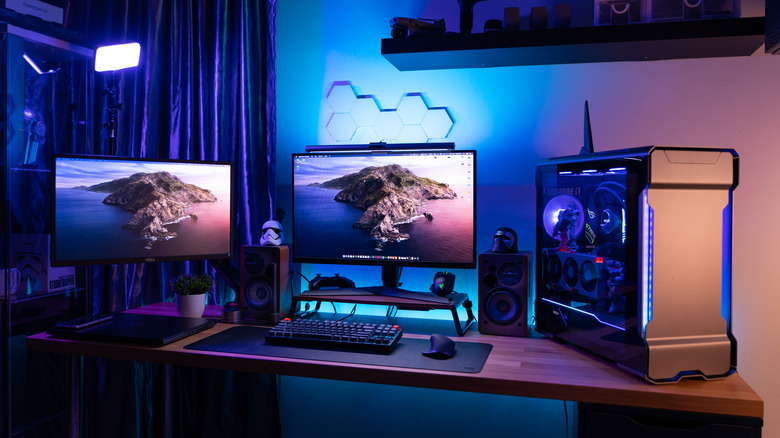How to Build a Custom Gaming PC

Building a custom gaming PC can be a rewarding experience, offering not only a machine perfectly tailored to your gaming needs but also a deeper understanding of computer hardware. Whether you’re a novice or a seasoned enthusiast, here’s a step-by-step guide on pafikotasingaparna.org that suits your budget and gaming preferences.
Planning Your Build
Before diving into the assembly process, careful planning is crucial. Begin by setting a budget and determining the type of games you want to play. This will help you decide on the level of performance your PC needs. Research the latest components to ensure compatibility and future-proofing. Consider factors like processor (CPU), graphics card (GPU), RAM (Random Access Memory), storage, and motherboard (MOBO).
Choosing Components
Selecting the right components is key to building a powerful gaming PC. For CPU, options from AMD Ryzen or Intel Core series offer robust performance. The GPU is critical for gaming; NVIDIA GeForce and AMD Radeon cards are popular choices. Opt for at least 16GB of RAM to handle modern games smoothly. Solid State Drives (SSDs) provide faster load times, while Hard Disk Drives (HDDs) offer more storage capacity at a lower cost. Ensure your chosen MOBO supports your selected CPU and has sufficient ports for peripherals.
Assembling the PC
- Prepare Your Workspace: Clear a clean, well-lit area to work on. Gather tools like screwdrivers (often Phillips head), antistatic wrist strap (optional but recommended), and cable ties for organization.
- Install the CPU and Cooler: Carefully align the CPU with the socket on the motherboard, avoiding force. Apply thermal paste and attach the cooler according to manufacturer instructions.
- Install RAM: Insert RAM sticks into the corresponding slots on the motherboard. Apply gentle pressure evenly until they click into place.
- Mount the Motherboard: Install the motherboard into the case, aligning it with the standoffs. Secure it using screws provided with the case.
- Install Storage Drives: Connect SSDs or HDDs to the motherboard using SATA cables. Secure them in the designated slots in the case.
- Install the GPU: Insert the graphics card into the PCI-E slot on the motherboard. Secure it with screws on the case bracket.
- Connect Power Supply (PSU): Install the PSU into the case and connect cables to the motherboard, GPU, storage drives, and CPU power connector.
- Cable Management: Route cables neatly to improve airflow and aesthetics. Use cable ties to secure and organize cables along the case edges.
- Install Operating System (OS): Boot your PC with a USB drive containing your chosen OS. Follow on-screen instructions to install the OS onto your SSD or HDD.
- Install Drivers and Updates: Download and install the latest drivers for your components from their respective manufacturer websites. Update the OS and drivers to ensure optimal performance and compatibility.
Testing and Troubleshooting
Once assembled, perform thorough testing to ensure everything functions correctly. Power on the PC and enter BIOS to verify components are detected. Run stress tests and benchmarks to check CPU and GPU performance. Monitor temperatures to ensure cooling is adequate.
Enhancing Your Gaming Experience
Customizing your gaming PC doesn’t stop at assembly. Consider adding LED lighting, additional cooling fans, or upgrading components over time to improve performance. Explore overclocking your CPU or GPU for extra power, but do so cautiously to avoid hardware damage.
Seeking Local Tech Support Services
If you encounter challenges during assembly or prefer professional assistance, consider seeking local tech support services near me. These experts can provide guidance, diagnose issues, or even assemble the PC for you if desired. They offer peace of mind and ensure your gaming rig operates at peak performance.
Conclusion
Building a custom gaming PC allows you to create a machine that meets your gaming needs precisely. From selecting high-performance components to assembling them with care, following these steps ensures a smooth and enjoyable experience. Whether you’re aiming for the latest in AI technology trends or simply want a powerful gaming setup, building your own PC is a rewarding journey into the world of technology and gaming.

-3.png?width=698&height=393&name=blog%20image%20Salima%20(1)-3.png)
